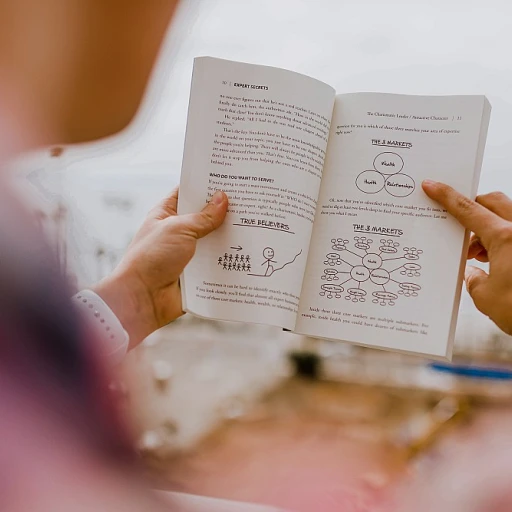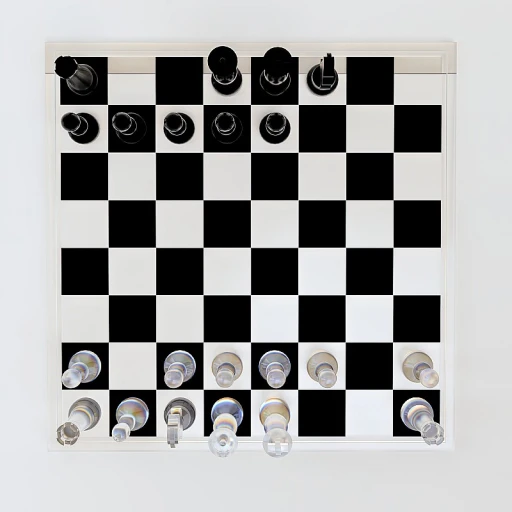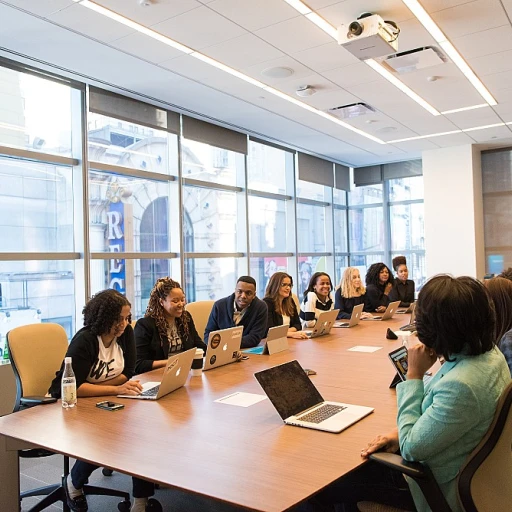The Importance of Team Building in Addressing Skills Gaps
Building Trust in Teams through Fun and Engagement
Effective team building events are crucial in addressing skills gaps within a company. Team building activities serve as a powerful tool for enhancing the relationships and dynamics within a team, ultimately leading to improved work performance and engagement. When employees participate in team building activities, they not only experience fun and camaraderie but also develop essential skills that contribute to achieving corporate goals.
Skills gaps can significantly hinder a company's productivity and growth. Often, these gaps manifest in areas such as problem-solving, communication, and collaboration among team members. By engaging in person or virtual team building activities, employees gain practical experience in overcoming these challenges, which will help in fostering a healthy company culture.
These activities often require careful planning and event coordination to maximize their effectiveness. In-person events might involve activities like trust falls or obstacle courses, whereas virtual events can take the form of online quizzes or virtual escape rooms. Regardless of the format, the goal is to create an environment where employees can bond and improve their collective problem-solving skills.
Moreover, team building activities can be tailored to address specific skills pertinent to company needs. For instance, skills when engaging a clerical team may differ significantly from those needed in a creative team. Thus, companies should carefully assess their team goals and plan activities that address their specific skills gaps. For insight into strategically addressing skills in specific areas, consider visiting
bridging the gap in clerical expertise.
Factors Influencing the Duration of Team Building Activities
Determining the Suitable Length for Team Building Events
Understanding the nuances of planning team-building activities requires careful consideration of various factors that influence their duration. Each team and event has unique requirements that contribute to the planning team's decision on the time needed for these activities.
Firstly, the goals and objectives of the team building event play a significant role. Is the focus on enhancing teamwork and problem-solving skills, or is it more about infusing fun and engagement into the corporate culture? The more complex the goal, the more time might be necessary.
Secondly, the choice between virtual and in-person events will impact the duration. Virtual team building often demands shorter, more dynamic activities due to reduced attention spans during online sessions. In contrast, person team activities might allow for a longer duration, as they can include breaks and more hands-on engagement.
Additionally, the size of the team and the experience level of its members are critical. Larger teams, or those with diverse backgrounds and company roles, might find value in extended sessions to ensure everyone has the opportunity to participate and learn effectively.
Finally, logistical details such as the availability of space for in-person events, or the ability to effectively manage fatigue and engagement for virtual events, will help inform the appropriate duration. Balancing time and effectiveness is key in ensuring the team building activity meets its goals and imbues positive experiences for all team members involved.
For more insights into the planning and execution of team building activities, explore the strategies highlighted in
understanding the role of an analytical task sheet in bridging the skills gap. This comprehensive resource delves into how task sheets can assist in detailed planning and execution, benefiting both the organizers and the participants.
Common Types of Team Building Activities and Their Typical Durations
Exploring Popular Team Building Exercises
Team building activities are designed to strengthen the cohesion, communication, and problem solving skills of employees. These activities vary in style, setting, and duration, catering to different company cultures and team goals. Understanding these common types can help in planning team building events that suit various situations.
- Icebreakers and Short Activities: These activities are perfect for a quick burst of fun and engagement. Typically lasting between 5 and 30 minutes, they include exercises like "two truths and a lie" or "minute to win it" challenges, igniting a spark within team members and breaking down initial barriers.
- Problem Solving Workshops: Engaging teams in problem-solving workshops can lead to stronger collaboration and innovative thinking. These activities usually take 1 to 2 hours and can involve simulations, role-playing, or puzzle-based challenges. The focus is on facilitating communication and developing a strategic approach to solving issues.
- Team Building Retreats: Organized as a one or even multi-day offsite event, retreats provide an immersive experience for teams to deepen relationships and align on corporate goals. Activities may range from outdoor adventures like hiking and treasure hunts to formal workshops with targeted skill development sessions.
- Virtual Team Building: In today's digital era, virtual events are gaining popularity, especially for remote teams. These activities, which might include online quizzes, virtual escape rooms, or collaborative project planning, depend on keen event planning to ensure engagement over video calls and can range from 30 minutes to a couple of hours.
All these activities aim to build a sense of camaraderie while addressing skills gaps within teams. It's crucial to balance their time efficiently with the desired outcomes, ensuring each team building event is both impactful and respects everyone’s time constraints. For more detailed examples, especially in Austin, check out this
guide to effective team building events.
Balancing Time and Effectiveness in Team Building
Optimizing Time and Engagement in Team Building
When planning team building activities, it's crucial to strike a balance between time allocation and achieving meaningful outcomes. The duration of these activities can significantly influence their effectiveness and the overall experience for your team members.
Recognizing that each person in your team has unique needs, interests, and schedules is vital for maximizing engagement. Although some teams might thrive in extensive, multi-day retreats, others will benefit more from concise, high-impact sessions that fit within their workday. It's about creating an engaging, fun experience while efficiently using the time.
- Goals and Objectives: Clearly defining what your team aims to achieve is essential. Whether it's enhancing communication, improving problem-solving skills, or strengthening interpersonal connections, the underlying goals will help you determine the optimal length for your activity. Consider setting aside time for both structured learning and informal, organic interactions to foster genuine connections.
- Employee Preferences: Consider the preferences and feedback of your employees regarding past team building events. Virtual events, for instance, may be more convenient for some, whereas in-person events could offer a richer corporate culture experience. Surveying your team beforehand can provide valuable insights that help tailor the time and type of activities to suit their needs better.
- Time Constraints: Working within your team’s schedule is key. Short-term, high-efficiency activities can be integrated into regular meetings or dedicated days, ensuring that team building doesn’t disrupt the workflow but complements it instead. Successful events require thoughtful planning to ensure they align with the team's availability without causing unnecessary stress or pressure.
Ultimately, effective team building isn’t just about the time invested; it’s about using that time wisely to enhance team development. By carefully weighing the duration against the goals and logistical considerations, you can design an event that is both impactful and accommodating, fostering lasting improvements in collaboration and company culture.
Case Studies: Successful Team Building Initiatives
Case Studies: Implementing Successful Strategies in Team Building
When examining successful team building initiatives, one can learn essential strategies for addressing skills gaps. These strategies often involve a tactical blend of planning, engagement, and a focus on company culture.
Case Study 1: Enhancing Communication through Virtual Events
A leading tech company sought to improve communication and problem-solving skills among its remote teams. The solution was a series of virtual team-building events focused on engagement and collaboration. Through virtual activities, such as online escape rooms and interactive workshops, team members were encouraged to interact and solve challenges together. The time invested in each activity was balanced to keep the team's engagement high without overwhelming their schedules. The outcome was a noticeable improvement in communication and teamwork, proving the efficacy of virtual team building in enhancing these skills.
Case Study 2: Bridging Cultural Gaps with Person-Centric Team Events
A multinational corporation faced challenges in fostering a unified company culture among its diverse workforce. They organized a year-long program of in-person team-building events that celebrated cultural diversity and promoted inclusivity. These activities included cultural fairs, language exchange sessions, and cooking events bringing employees together from various backgrounds. The events required meticulous planning but resulted in a highly cohesive team with a better understanding of cultural nuances, proving that person-centric team building can significantly enhance team development and workplace harmony.
Case Study 3: Short Intensive Workshops for Skill Development
A financial services firm identified a substantial skills gap in digital literacy among its employees. To address this, they implemented short, intensive team-building workshops focused on specific digital skills. These workshops were strategically timed to fit into existing work schedules and were designed to be interactive and engaging. The quick turnaround of these sessions helped bridge the skills gap efficiently without detracting from the core work responsibilities of the teams. The success of these workshops underscores the importance of strategic planning in structuring team building activities that are both time-efficient and impactful.
In each of these case studies, the success of team building initiatives is attributed to thoughtful planning, a clear understanding of goals, and a strategic approach to balancing time commitment with the effectiveness of the activities. These examples highlight the potential impact of well-designed team building efforts on addressing skills gaps within organizations.
Tips for Planning Effective Team Building Activities
Planning Successful Team Building Experiences
When planning a team building event, it's crucial to ensure a balance between ensuring the activity is engaging and achieving meaningful development goals for all team members. Here’s how you can effectively plan such experiences:
- Define Clear Objectives: Start by understanding what you want to achieve with your team building activities. Whether it's enhancing company culture, improving problem solving skills, or increasing team engagement, having a clear goal will guide your planning process.
- Consider the Team’s Needs and Preferences: Every team is different. Take into account what works best for your employees in terms of interests and comfort levels. Some teams might thrive in a virtual event setting, while others benefit more from in-person events.
- Optimize Time and Resources: As discussed, the duration of a team building activity significantly influences its success. It’s important to plan an event that aligns with the available time and resources, ensuring it’s productive rather than rushed or overly drawn out.
- Inclusivity and Accessibility: Ensure that your team building activities are inclusive, allowing every team member to participate fully. Whether it’s a virtual team event or an in-person day out, inclusivity will foster a better experience for all.
- Engage with Professional Planners: Sometimes, outsourcing to corporate event planners can save time and provide expertise for complex activities. They can offer creative and effective solutions that can enhance team cohesion and development.
- Gather Feedback: After the activity, seek feedback from team members. Understanding their experience will help in planning more successful activities in the future, ensuring continuous improvement in team dynamics and work culture.
These practical tips will help you design and implement a fun and effective team building event, promoting greater cooperation and success within your corporate setting. As you move forward, remember that the key is adaptability and a clear focus on your team’s growth and development goals.













